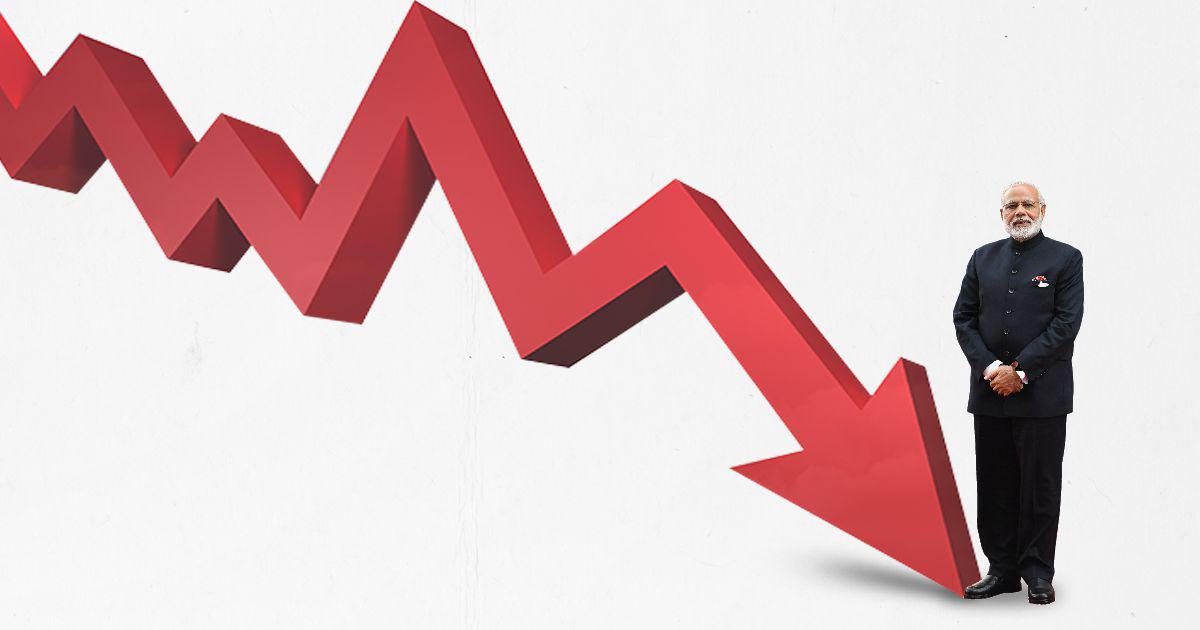Adani’s Falling Wealth Grabbed All Attention, While The Reality Of India’s Struggling Economy Missed All Headlines
The weakening signs of India's economy was completely sidelined by the explosive tell-all-tale by the Hindenburg Research report which created a tremendous stir within the country; it hit like a bullet, and with it, it made the Adani Group, the political parties, the Indian stock markets and the media's endless headlines on the aftermath of the publication of the report a one-month long exercise, it still continues. However, something vital was missed: India's Forex reserves hit an 11-week low. The rupee traded in a narrow range of 82.56 to 82.89. Exports declined.

The Indian economy and its many facets took a backseat this past month as Adani, Hindenburg, and, to some extent, Geroge Soros took center stage. The disclosure of the Hindenburg report on the rising and shining star of India and its economy – the Adani Group was so severe, and its implications and repercussions so far-reaching that it simply took the nation, political leaders, media, stock markets, Adani Group itself and the investors for a hell of a ride.
But in this melee of accusations, counter-accusations, political upheaval, struggling stock markets and the downward spiral of Adani Group stocks that wiped out his wealth by a vast margin, the Indian economy was utterly disregarded.

These are the important facts that were missed –
1) India’s foreign exchange reserves fell, hitting an 11-week low, dropping to $575.27 billion in the week ended February 3.
This is the biggest drop since October 21, with reserves taking a 1.5% hit this time.
In the previous week, the one that ended January 27, reserves stood at $576.76 billion.
The country’s foreign currency assets in the same week were down $1.3 billion at $507.7 billion.
2) Meanwhile, the rupee fell 0.7% against the U.S. dollar in the same week, trading in a wide range of 81.49 to 82.31.
3) Exports dropped by 6.6% in Jan for the second month.

Major Red Flags – Indian Economy 2023
Thinning Forex Reserves
Foreign-exchange reserves act as the first line of defence for the country in case of economic slowdown; in the current, there are indeed pertinent concerns about the global economy.
Economies of all major countries worldwide are showing signs of a considerable slowdown, and as a result, almost all major companies with a global presence have resorted to cost-cutting. The same measures have also not lost ground when it comes to Indian startups and SMEs since recession concerns have impacted all sectors.
India’s foreign exchange reserves are mainly comprised of U.S. dollars in the forms of U.S. government bonds and institutional bonds, with nearly 7.34% of forex reserves in gold. The FCAs also enclose investments in U.S. Treasury bonds, bonds of other selected governments and deposits with foreign central and commercial banks.
India’s Forex Reserves
• Reduced by $5.68 billion to an 11-week low of $561.267 billion for the week ended February 17.
• This is the third week in a row when forex reserves sank.
• For the week ended February 10, they decreased by $8.32 billion to $566.948 billion and by $1.49 billion for the week ended February 3.
• Decreased by over $15 billion in February

The Decline was seen in all components
• Foreign currency assets, which are the biggest component of the forex reserves, dipped by $4.51 billion to $496.07 billion.
• Value of gold reserves declined by $1.04 billion to $ 41.81 billion.
• Special Drawing Rights (SDRs) declined by $87 million to $18.26 billion.
• India’s reserve position with the International Monetary Fund lowered by $34 million to $5.11 billion during the last week.

Why are foreign exchange reserves so important, and why do we need them
• To meet our import expenses
• For repayment of external debts
• For Investments abroad
• For services like education, medical treatment, tourism, on-site projects
• To secure RBI has backup funds if the rupee rapidly devalues
How do we earn forex?
Through exports and adding more dollars through loans
India’s Declining Exports:
Exports are, of course, the channel through which a country earns significant amounts of revenue. India’s top ten exports are in the sector of Petroleum products, Mechanical equipment, Jewellery, Drugs and pharmaceuticals, Electronics, Diary products, Cereals, Textile products, Organic chemicals and ready-made garments.
The top global countries to which India exports are the following – USA, China, UAE, Hong Kong, Bangladesh, Singapore, Nepal, United Kingdom and the Netherlands.
The majority of the major economies like the USA, China, the U.K. and the Netherlands are all seeing a slowdown in their respective economies; hence it is only logical to assume that the exports will also likely take a hit.
India’s Exports dipped by
• 6.58% to $32.91 billion in January
• Contracted for the second month in a row. In Dec 2022, it declined by
12.2% to $34.48 billion
• Engineering exports dipped 3.37% to $88.27 billion from April-January
2022-23.
- Gems and jewellery shipments declined 0.54% to $31.61 billion.

Indian Imports Story
While the exports took a dip, on the other hand, the Indian imports rose by –
• In the 10 months of the current fiscal, crude oil imports rose 53.54% to $178.45 billion
• Imports of coal, coke and briquettes were up 18.91% to $43.17 billion
The economists estimate the current account deficit (excess of imports over exports) will touch 3.1% of India’s GDP, up from 1.2% last year.
India’s Burden of Debt
• As per RBI reports, as of September 2022, India’s external debt stood at $621.5 billion. The external debt to GDP ratio was 19.2%.
• More than 40%, or $267 billion worth of external debt of a total of $621 billion, is due for repayment in the next nine months.
• This repayment is equivalent to about 44% of India’s foreign exchange reserves.
India’s Sliding Rupee
So far in this month, the rupee has fallen by 81 paise. It depreciated to 82.75 on February 24 from 81.94 on February 1, 2023
As the rupee falls against the U.S. Dollar, it means the nation has to pay more rupees against the dollar loans.
India’s Slowing GDP
Gross domestic product growth in the December quarter slipped to an annual 4.6%, according to the median forecast of 42 economists in the February 10-24 survey.
It is expected to slow further to 4.4% in the current quarter and across 2023-24
Conclusion: The fact is that India’s economy has started to show concerns amid the global slowdown. As we progress further into the financial year 23-24, in all likely hood, it will get further impacted by global headwinds.
Also, not to forget India steps into election territory next year, and hence, significant concerns such as India’s falling reserves, the rupee against the dollar, exports, GDP and all such vital issues may be overrun by one and one issue only – The Adani Group fiasco, as has already been seen to be emerging as the burning topic for political parties to zero in on.




